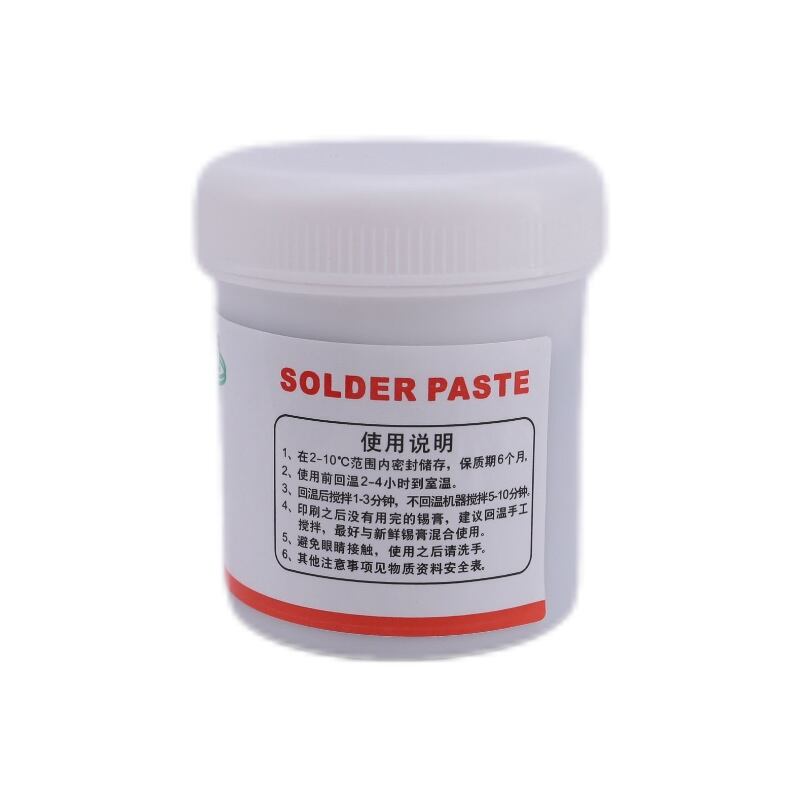Loddpaste er ein kritisk komponent i elektronikken og metallverket som gjer at alle ting er knytte Anten du er ein profesjonell teknikar eller ein helg-hobbyist, kan du bedøve prosjektane dine ved å forstå korleis du effektivt kan bruka loddpasta. Denne omfattende guiden vil gje deg tips, innsikt og beste praksis for bruk av loddpeste.

Loddpasta er ei blanding av fine metallpartiklar - hovudsakleg loddlegering - og fluks. Denne kombinasjonen gjer det mogleg å knyta saman metalloverflate på ein sømløs måte. Når dei blir oppvarma smeltar og flyter desse, og skaper sterke, permanente bindelar mellom elektroniske komponenter.
Loddpasta finst i ulike formellar til ulike bruk. Dei vanlegaste typane er:
Leidekaste med bly : Vanlegvis brukt i mange elektroniske applikasjonar, har det utmerkelege flyt- og fuktegjerde. På grunn av helse- og miljømessige bekymmar minkar bruken av det til fordel for blyfrie alternativ.
Blyfri loddpaste : Denne typen er laga av tenn-sølv-kopparsamband, og er meir miljøvennleg, men kan vera vanskelegare å arbeide med på grunn av høgare smeltepunkt og ulike flytegenskapar.
Spesielle soldeppastar det finst pasta som er utformet for spesielle bruksområder, som høgtemperatur applikasjonar, eller som krev spesielle smeltegenskapar, som til dømes i smykkeskaping.
Loddpasta vert brukt i mange omgjerder, inkludert:
Løserist : Temperaturregulerte loddjern er viktige for å smelte loddpasta på rett måte og for å hindra skade på komponentane.
Loddpaste-sprøyter : Dette gjer det mogleg å påføre loddpasta på utpekte område.
Reinsingsmateriale : Isopropylalkohol eller andre rengjøringsmiddel sørgjer for at overflatene er frie for forurensingar før du brukar lodd.
Pinzet og andre handverktøy ofte er det naudsynt for å manipulera små komponenter.
Når du veljer loddpasta, tenk på applikasjonen, materialet du arbeider med og loddteknikkane du har tenkt å bruka. Kvar type har ulike karakteristika når det gjeld flyt, adhesjon og tilbaketrekkingsprofil.
Tryggleik bør alltid vera ein prioritet i alle loddprosjekt. Nøkkelutstyret for tryggleik inkluderer:
Temperaturkontroll er avgjørende i lodding. For låg temperatur kan hindra at loddpasta smeltar ordentleg, medan for høg temperatur kan skada følsomme komponenter. Temperaturen bør generelt stillast i samsvar med typen loddpasta som vert brukt, typisk rundt 230-250°C for blyfri loddpasta.
Overflødig loddpaste : Om du brukar for mykje pasta kan det bli rotete samanhengar og forstyrra loddprosessen. Bruk berre nok til å dekke området som skal loddast.
Forglemme å bereda overflaten : Reine overflater er viktig for eit vellukka band. Støv og olje kan føre til svakare tilknyting.
Å hoppa over kjøletid : Lat nok tid til at loddarføra kølner ordentleg. Det sørgar for at bindinga er trygg før hantering.
Ved å bruka loddpaste effektivt kan du betyrd betra kvaliteten og ytinga på elektronikkprosjektene dine. Ved å forstå samansetnaden, velje rett verktøy og materiale og følgje beste praksis, kan du oppnå sterke og pålitelege loddar. Anten du er å laga eit DIY-projekt med elektronikk eller å utføra profesjonelle reparasjonar, er det ein uvurderleg ferdighet å ha for deg å laga soldepasta.
Copyright © 2024 Shenzhen Zhengxi metal Co.,LTD